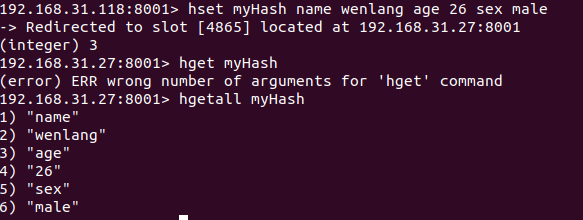Redis键的类型
从表面上看,键可以是
- 字符串类型,例如
set str lang - 整型,例如
set 100 100 - 浮点型,例如
set 0.1 100
但实际上,在底层,这些键的类型都是字符串类型。
Redis字符串类型
Redis的字符串类型叫SDS,simple dynamic string。
为什么不用C原生的字符串?
Redis底层采用C的实现,C的字符串是字符数组,例如:
char data[] = "hello\0";
但是Redis并没有采用C的字符串实现,而是自己实现了SDS。原因如下:
- 二进制安全的数据结构
C的字符串数组以\0结尾,Redis作为一个中间件可能要和很多种不同的语言进行数据交换,比如Java,C,PHP等。这些语言可能在传输的过程中会带上\0,那么就会导致读取的时候出问题,例如:
"Hello\0World"如果采用C的字符串实现,就只会读取到Hello就结束了。
- 此外,提供了内存预分配。
因此,它的扩容与C不同,例如我们想要:
char buf[] = "Hello" -> "HelloWorld"
C只会将数组长度从5变成10,但是SDS会(len + addLen) 2,即(5 + 5) 2 = 20;
- 最后,它会在字符串末尾,追加上
\0来兼容C语言的函数库。
SDS详解
基本结构
- char buf[] 用来保存数据;
- len用来保存当前字符串的实际长度;
- free用来保存当前数组的剩余空间。
例如,在上面的例子中,从Hello变成HelloWorld,那么:
// 扩容后总空间变成了20char buf[] = "HelloWorld"len: 10free: 10
那么下一次需要修改字符串时,先去检查要新添加的字符串长度是否小于free, 小于就直接添加进去即可,不必再进行扩容。
版本差异
在3.2版本以前,结构如下:
struct sdshdr {int len;int free;char buf[]}
sds是simple dynamic string的缩写,hdr是header的缩写
但是这样导致了很大的空间浪费,因为int类型占据4个字节,可以表示上亿的数据,但是我们的char数组中通常不会存放那么多的数据。
在3.2以后,根据不同的数据实际大小选择不同的sds类型:
/* Note: sdshdr5 is never used, we just access the flags byte directly.* However is here to document the layout of type 5 SDS strings. */struct __attribute__ ((__packed__)) sdshdr5 {unsigned char flags; /* 3 lsb of type, and 5 msb of string length */char buf[];};struct __attribute__ ((__packed__)) sdshdr8 {uint8_t len; /* used */uint8_t alloc; /* excluding the header and null terminator */unsigned char flags; /* 3 lsb of type, 5 unused bits */char buf[];};struct __attribute__ ((__packed__)) sdshdr16 {uint16_t len; /* used */uint16_t alloc; /* excluding the header and null terminator */unsigned char flags; /* 3 lsb of type, 5 unused bits */char buf[];};struct __attribute__ ((__packed__)) sdshdr32 {uint32_t len; /* used */uint32_t alloc; /* excluding the header and null terminator */unsigned char flags; /* 3 lsb of type, 5 unused bits */char buf[];};struct __attribute__ ((__packed__)) sdshdr64 {uint64_t len; /* used */uint64_t alloc; /* excluding the header and null terminator */unsigned char flags; /* 3 lsb of type, 5 unused bits */char buf[];};
扩容的注意事项
- 当字符串的大小大于1M时,不会再成倍扩容,而是每次只会增加1M。
- 采取渐进式扩容,即不是一次性完成扩容和数据转移,而是逐步进行转移;
Key和Value的实现
类似于HashMap,采用数组 + 链表实现海量数据存储。
Key -> Hash(Key) % 长度 -> 转化成Index -> 如果哈希冲突,则形成链表。
每一个键值对都是一个dictEntry
typedef struct dictEntry {
// key指向一个sds
void *key;
// 值是一个union,一次只使用union中的某一个字段
union {
void *val;
uint64_t u64;
int64_t s64;
double d;
} v;
// next指向下一个dictEntry, 形成链表。
struct dictEntry *next;
} dictEntry;
Redis值的类型
每一个对象被封装成了一个RedisObject, 由dicEntry中的val指针指向。
typedef struct redisObject {
// type表示类型,用来约束客户端命令,比如不能对list类型的数据进行set,要用lpush
unsigned type:4;
// 涉及到底层优化,比如看起来是string类型的值,实际上是int类型或者embstr类型
unsigned encoding:4;
// LRU
unsigned lru:LRU_BITS; /* LRU time (relative to global lru_clock) or
* LFU data (least significant 8 bits frequency
* and most significant 16 bits access time). */
// 引用法,用来做垃圾回收
int refcount;
// 指向真正的数据
void *ptr;
} robj;
实际Encoding
对于String类型的值,底层的Encoding是变化的,可以是int, embstr或者raw,这取决于实际的值的长度。
例如:
set str aString
object encoding str
// 得到的aString的类型为embstr
set aNumber 10
object encoding aNumber
// 得到的10的类型为int
set longString aaaaaaaaaaaaaaaaaaaaaaaaaaaaaaaaaaaaaaaaaaaaaaaaaaaaaaaaaaaaaaaaaaaaaaaaaaaaaaaaaaaaaaa
object encoding longString
// 得到的aaaaaaaaaaaaaaaaaaaaaaaaaaaaaaaaaaaaaaaaaaaaaaaaaaaaaaaaaaaaaaaaaaaaaaaaaaa的类型为raw => 即sds
注意,是值的类型,不是key的类型。
int类型源码如下:
/* Try to encode a string object in order to save space */
robj *tryObjectEncoding(robj *o) {
long value;
sds s = o->ptr;
size_t len;
/* Make sure this is a string object, the only type we encode
* in this function. Other types use encoded memory efficient
* representations but are handled by the commands implementing
* the type. */
serverAssertWithInfo(NULL,o,o->type == OBJ_STRING);
/* We try some specialized encoding only for objects that are
* RAW or EMBSTR encoded, in other words objects that are still
* in represented by an actually array of chars. */
if (!sdsEncodedObject(o)) return o;
/* It's not safe to encode shared objects: shared objects can be shared
* everywhere in the "object space" of Redis and may end in places where
* they are not handled. We handle them only as values in the keyspace. */
if (o->refcount > 1) return o;
/* Check if we can represent this string as a long integer.
* Note that we are sure that a string larger than 20 chars is not
* representable as a 32 nor 64 bit integer. */
len = sdslen(s);
// 如果长度小于等于20,且字符串可以转化为整型值,转化为int类型
if (len <= 20 && string2l(s,len,&value)) {
/* This object is encodable as a long. Try to use a shared object.
* Note that we avoid using shared integers when maxmemory is used
* because every object needs to have a private LRU field for the LRU
* algorithm to work well. */
if ((server.maxmemory == 0 ||
!(server.maxmemory_policy & MAXMEMORY_FLAG_NO_SHARED_INTEGERS)) &&
value >= 0 &&
value < OBJ_SHARED_INTEGERS)
{
decrRefCount(o);
incrRefCount(shared.integers[value]);
return shared.integers[value];
} else {
if (o->encoding == OBJ_ENCODING_RAW) sdsfree(o->ptr);
o->encoding = OBJ_ENCODING_INT;
o->ptr = (void*) value;
return o;
}
}
/* If the string is small and is still RAW encoded,
* try the EMBSTR encoding which is more efficient.
* In this representation the object and the SDS string are allocated
* in the same chunk of memory to save space and cache misses. */
if (len <= OBJ_ENCODING_EMBSTR_SIZE_LIMIT) {
robj *emb;
if (o->encoding == OBJ_ENCODING_EMBSTR) return o;
emb = createEmbeddedStringObject(s,sdslen(s));
decrRefCount(o);
return emb;
}
/* We can't encode the object...
*
* Do the last try, and at least optimize the SDS string inside
* the string object to require little space, in case there
* is more than 10% of free space at the end of the SDS string.
*
* We do that only for relatively large strings as this branch
* is only entered if the length of the string is greater than
* OBJ_ENCODING_EMBSTR_SIZE_LIMIT. */
if (o->encoding == OBJ_ENCODING_RAW &&
sdsavail(s) > len/10)
{
o->ptr = sdsRemoveFreeSpace(o->ptr);
}
/* Return the original object. */
return o;
}
embStr类型:
读取缓存行时,一次能读取64byte, 而一个redisObject只有16byte,那么就意味着还有48byte是没用到的。
我们尝试将数据放进没用到的48byte里边,即尝试将一个sds放到这48byte里,采用sdshdr8.
sdshdr8中,自身消耗了四个字节,即:
struct __attribute__ ((__packed__)) sdshdr8 {
uint8_t len; /* used */ 1个字节
uint8_t alloc; /* excluding the header and null terminator */ 1个字节
unsigned char flags; /* 3 lsb of type, 5 unused bits */ 1个字节
char buf[]; // 末尾补\0占用一个字节
};
那么buf[]中还可以存44个字节。因此:
当String类型的长度小于等于44字节,且不能转化为int类型时,就会以embStr类型存储。大于44字节就变成了raw。
Bitmap
做亿级用户的日活统计。
List类型
3.2以前,采用zipList + quickList来做底层实现,其中quickList是双端链表。
zipList在满足以下条件之一会转化成quickList:
- 试图往zipList里添加新的字符串,且添加后长度大于server.list_max_ziplist_value,默认为64;
- ziplist 包含的节点超过 server.list_max_ziplist_entries (默认值为 512 )。
3.2以后,zipList被quickList所取代。
Hash类型
采用ZipList
底层采用字典(dict)实现,当数据量比较小,或者单个元素比较小时,底层用zipList存储。

图片来自:https://i6448038.github.io/2019/12/01/redis-data-struct/
每一个entry长这样:
当采用zipList时,底层的数据是有序的,即
可以看到,放进去的时候是什么顺序,拿出来的时候也是什么顺序。
采用HashTable
当满足下面两个条件之一,会转化成HashTable:
- hash-max-ziplist-entries 512 // ziplist中包含的元素个数大于512时
- hash-manx-ziplist-value 64 // 当存在单个元素的大小超过64byte时
例如,在上面的例子中设置一个非常长的字符串:
可以看到,不再有序。
Set类型
Set底层为一个value为null的字典(dict),当数据可以用整型表示时,Set集合采用编码为intset的数据结构。
如果满足以下两个条件之一,转化为HashTable编码:
- 元素个数大于set-max-intset-entries // 默认为512
- 元素无法用整型表示 // 例如sadd a-set a

